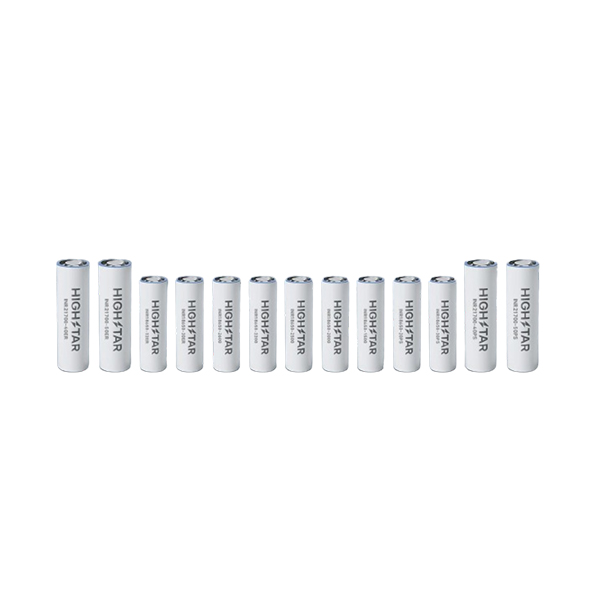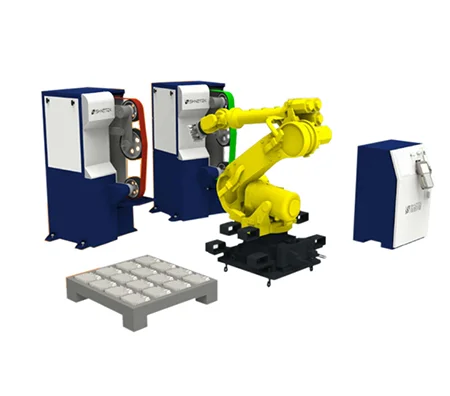Among modern lithium-ion battery applications, 18650 NMC batteries are widely used in electric vehicles, power tools, energy storage systems, drones, and other fields due to their high energy density, light weight, excellent thermal stability, and long cycle life. Cycle life is a key indicator of battery performance, directly impacting the product's lifespan, maintenance costs, and cost-effectiveness.
So, what is the cycle life of 18650 NMC? What factors influence it? And how can its service life be effectively extended? This article will provide a detailed explanation.
1. What is 18650 NMC?
Before discussing cycle life, we first need to understand the meaning of "18650 NMC."
18650: This is a battery form factor code, with 18 representing an 18mm diameter, 65 representing a 65mm length, and 0 indicating a cylindrical shape. It is currently the most widely used lithium battery type in consumer electronics and electric vehicles. NMC: Represents the composition of the cathode material, specifically nickel-manganese-cobalt (NMC), with common ratios including NMC 111, NMC 532, NMC 622, and NMC 811. NMC combines high energy density with excellent stability, making it the mainstream ternary lithium material.
2. What is cycle life?
Cycle life refers to the number of charge and discharge cycles a battery can complete before its capacity decays to 80% of its original capacity. For example, if a battery with an initial capacity of 3000mAh drops to 2400mAh (80%) after 500 charge and discharge cycles, its cycle life is 500 cycles.
In actual applications, the cycle life of 18650 NMC ranges from approximately 500 to 2000 cycles, depending on multiple factors including the material system, battery design, usage conditions, and management system.

3. Major Factors Affecting the Cycle Life of 18650 NMC Cells
3.1 Cathode Material Ratio
NMC materials with different ratios have different performance characteristics:
NMC 111 (1:1:1): High structural stability, but low energy density;
NMC 622 (6:2:2): A balance between energy density and thermal stability;
NMC 811 (8:1:1): High energy density, but relatively poor stability, which significantly impacts cycle life.
NMC 622 is generally the most widely used ratio, with a cycle life of 800-1500 cycles.
3.2 Battery Manufacturing Process
High-quality manufacturing processes are crucial to cycle life, including:
Electrode coating uniformity;
Consistency of positive and negative electrode materials;
Electrolyte injection control;
Separator material and coating treatment;
Laser welding, winding, or lamination accuracy.
Poor process performance can easily lead to inconsistent capacity, increased internal resistance, thermal runaway, and other issues, thereby reducing cycle life. 3.3 Charge and Discharge Rate (C-Rate)
High-rate charging (e.g., above 1C) can exacerbate structural damage to electrode materials and shorten battery life.
Excessive discharge current (e.g., continuous discharge current above 3C) can also accelerate lithium deposition and side reactions.
It is recommended to control the charge rate between 0.5C and 1C, and the discharge rate between 1C and 2C, to maintain battery cycle performance.
3.4 Charge and Discharge Voltage Range
The operating voltage range of 18650 NMC is generally between 3.0V and 4.2V.
Prolonged charging to 4.2V or higher can accelerate oxidation of the positive electrode material and electrolyte decomposition.
Discharging below 2.5V can also easily cause dissolution of the copper current collector and lithium plating on the negative electrode.
Maintaining the voltage between 3.2V and 4.1V during use can significantly improve cycle life, even by more than 30%. 3.5 Operating Temperature
Batteries achieve optimal cycle life when operating between 20°C and 30°C.
High temperatures (>45°C) accelerate electrolyte volatilization and side reactions.
Low temperatures (<0°C) can cause lithium deposition and capacity loss.
Therefore, temperature control systems are crucial in applications such as electric vehicles and power tools.
3.6 Battery Management System (BMS)
A BMS can provide the following functions:
Overcharge/over-discharge protection;
Temperature monitoring;
Balance control;
Data logging, etc.
A high-quality BMS can prevent abnormal operating conditions, maximize battery pack health, and extend cycle life.
4. 18650 NMC Cycle Life Test Standards and Data
Under laboratory conditions, cycle life testing typically includes:
Standard charge: constant current charging to 4.2V, then constant voltage to a cutoff current of 0.05C;
Standard discharge: constant current discharging to 3.0V;
Repeated charge and discharge cycles, recording capacity data every 100 cycles until the capacity falls below 80% of the initial value. Conclusion: Light loads, room temperature, and a reasonable voltage range are key to extending the cycle life of 18650 NMC batteries.
5. How to Extend the Cycle Life of 18650 NMC Batteries?
Avoid overcharging and discharging: Use a charger that supports voltage management and promptly stop deep discharge.
Control operating temperature: Avoid direct sunlight or prolonged high-temperature storage. Preheat appropriately in cold weather.
Lower the charge voltage threshold: Setting the charge cutoff voltage to 4.1V (not 4.2V) for a long period of time can extend battery life by 30-50%.
Avoid high-rate operation: Avoid high-current charging and discharging unless necessary.
Perform regular equalization charging: Balance the voltage of the individual cells in the battery pack to prevent individual cells from lagging behind and affecting the overall battery.
Use equipment with a battery management system: An intelligent battery management system effectively manages cycling conditions and is a key measure for protecting batteries.
6. Cycle Life Requirements in Application Scenarios
6.1 Electric Vehicles
An electric vehicle's battery pack typically needs to support more than 1,000 complete cycles.
If charged once a day on average, a service life of 5 to 8 years is required.
In this case, the use of NMC 622 or 811 batteries, combined with a BMS and thermal management system, is particularly critical.
6.2 Energy Storage Systems
Home or commercial energy storage systems typically require more than 3,000 to 5,000 cycles.
Lithium iron phosphate (LFP) batteries are more suitable for this purpose, but some scenarios also require NMC systems with optimized service life.
6.3 Consumer Electronics (such as laptops, flashlights, and drones)
An average cycle count of approximately 500 to 800 cycles is sufficient for daily use.
Users can extend battery life by regularly charging, discharging to 50% when not in use, and avoiding high-temperature storage.
The 18650 NMC battery, with its excellent energy density and long service life, is an ideal choice for many applications. Cycle life is affected by a variety of factors, including material ratio, rate, voltage range, and temperature. Through scientific management and proper use, users can extend battery life and improve device performance. Under proper usage conditions, 18650 NMC batteries can achieve a cycle life of 1,000 to 1,500 cycles, or even higher.
For enterprise users, selecting a battery supplier with professional cell technology and BMS design capabilities is also a key strategy for ensuring project performance and cost-effectiveness.
For more information on 18650 NMC battery product specifications, application recommendations, or customized solutions, please feel free to contact our technical support team.
www.highstar-lithium.com
highstar


